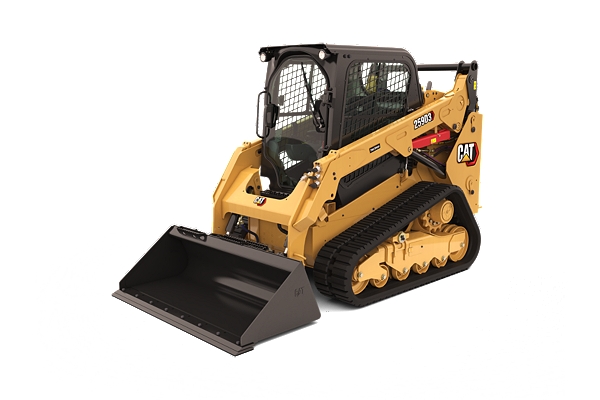Leasing Vs. Buying Construction Devices: Making the Right Option for Your Job
When getting started on a construction project, among the crucial decisions that project managers and stakeholders face is whether to rent or buy building tools. Both alternatives have their benefits and downsides, making the selection an essential one in the task planning process. The decision rests on numerous elements such as price factors to consider, job duration, devices maintenance, adaptability, scalability, and threat monitoring. Each component plays a vital duty in figuring out the most suitable path for the task's tools demands. construction equipment rentals. Allow's discover these aspects better to comprehend how they influence the decision-making process and ultimately the success of the job.
Price Factors To Consider
Renting out devices commonly calls for reduced preliminary repayments compared to acquiring, making it an eye-catching alternative for short-term jobs or specialists with budget plan constraints. In the lengthy run, continuously renting tools can gather higher costs than acquiring, specifically for extensive projects.
On the other hand, buying construction tools includes higher upfront prices however can result in lasting cost savings, particularly for lasting jobs or constant individuals. Inevitably, the choice in between getting and renting construction equipment hinges on the project's period, frequency of use, spending plan factors to consider, and long-term economic objectives.
Task Duration

Conversely, for long-term jobs or recurring construction job, buying tools can be the more cost-effective alternative. Purchasing equipment can cause set you back financial savings in the lengthy run, especially if the tools will be regularly used. Moreover, having tools offers a sense of control over its accessibility and permits for personalization to fit particular task needs.

Equipment Maintenance
Provided the critical role project period plays in establishing one of the most economical technique in between leasing and getting building and construction tools, the emphasis now moves in the direction of taking a look at the essential facet of devices maintenance. Proper maintenance is vital for ensuring the ideal efficiency and longevity of building devices. Renting devices frequently comes with the advantage of having well-maintained equipment supplied by the rental firm. This can ease the worry of upkeep tasks from the task proprietor or contractor, saving effort and time. On the other hand, owning devices calls for an aggressive technique to upkeep to stop malfunctions, make sure security, and expand the devices's lifespan. Routine examinations, maintenance, and prompt repair work are needed to maintain owned and operated equipment in top functioning condition. Consider maintenance prices when making a decision between renting and buying, as disregarding maintenance can lead to pricey fixings, downtime, and task hold-ups. Inevitably, a properly maintained construction tools fleet, whether leased or possessed, is necessary for the effective and reliable conclusion of building tasks.
Flexibility and Scalability
In the realm of building and construction tools monitoring, the facet of flexibility and scalability holds considerable relevance for task performance and resource utilization. Choosing to rent out building and construction devices gives a high level of versatility as it permits the fast adjustment of equipment kinds and amounts based on the advancing needs of a project. Renting out allows specialists to access a wide variety of specialized devices that might be needed for particular jobs without the long-term commitment of ownership. This versatility is particularly advantageous for projects with differing requirements or unclear durations (construction equipment rentals).
Renting out building and construction devices offers the advantage of easily scaling procedures up or down aerial lift rental as task needs rise and fall. Contractors can rapidly exchange or add tools to match the project's altering demands without the constraints of having assets that might become underutilized or outdated.
Risk Monitoring
Effective risk administration in building tools procedures is paramount to guaranteeing task success and mitigating potential monetary losses. Building and construction jobs naturally entail various threats, such as tools breakdowns, accidents, and job delays, which can substantially impact the task timeline and spending plan. By carefully thinking about the threats connected with owning or renting out building devices, project supervisors can make informed decisions to minimize these possible threats.
Leasing building tools can use a level of threat mitigation by transferring the responsibility of upkeep and fixings to the rental business. This can decrease the monetary problem on the job owner in case of unforeseen equipment failings (rental company near me). Additionally, renting out offers the versatility to access specialized devices for specific project stages, lowering the threat of owning underutilized machinery
On the various other hand, owning building and construction tools gives a feeling of control over its usage and maintenance. However, this also suggests bearing the full responsibility for fixings, upkeep costs, and devaluation, increasing the economic threats related to tools ownership. Mindful threat assessment and factor to consider of factors such as project period, tools utilization, and upkeep needs are vital in determining the most appropriate choice for effective risk management in building and construction tasks.
Final Thought
In final thought, when deciding in between buying and renting building and construction tools, it is very important to think about price, job period, equipment upkeep, adaptability, danger, and scalability monitoring. Each element plays an essential duty in figuring out the most ideal alternative for the task available. By carefully reviewing these aspects, job managers can make an enlightened decision that lines up with their budget plan, timeline, and general job objectives.
